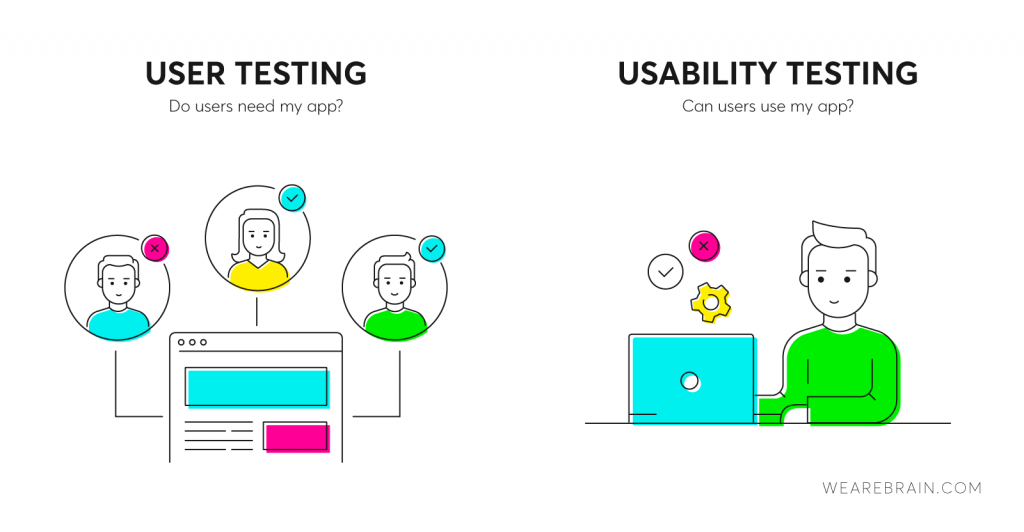Understanding the Importance of User Testing
In the realm of product development, user testing stands as a pivotal process that bridges the gap between creators and consumers. It serves as a compass, guiding developers towards creating products that resonate deeply with their target audience. In this article, we delve into the essence of user testing, exploring its significance, methodologies, and the impact it holds on product success.
Defining User Testing
User testing, often referred to as usability testing, entails evaluating a product or service by testing it with representative users. The primary goal is to observe how users interact with the product, uncovering insights into its usability, functionality, and overall user experience. This process provides invaluable feedback that aids in refining and optimizing the product before its official launch.
The Significance of User Testing
User testing serves as a reality check for developers, offering firsthand insights into how their target audience perceives and engages with the product. By simulating real-world usage scenarios, developers can identify potential pain points, usability issues, and areas for improvement. This proactive approach minimizes the risk of launching a product that fails to meet user expectations, ultimately saving time and resources in the long run.
Enhancing User Experience
At the core of user testing lies the quest to enhance user experience (UX). By observing user behavior and soliciting feedback, developers gain a deeper understanding of what resonates with users and what doesn’t. This insight enables them to make informed design decisions aimed at optimizing the product’s usability, intuitiveness, and overall satisfaction for the end user.
Types of User Testing
User testing encompasses various methodologies, each tailored to suit specific objectives and constraints. Some common types of user testing include:
- Moderated Usability Testing: In this method, a moderator guides participants through predefined tasks while observing their interactions with the product. This approach allows for real-time feedback and in-depth insights into user behavior.
- Remote Usability Testing: With the advent of technology, remote usability testing has gained prominence. Participants engage with the product from their own environment, providing convenience and accessibility while still offering valuable feedback.
- A/B Testing: A/B testing involves presenting users with different versions of the product to determine which performs better in terms of user engagement, conversion rates, or other key metrics. This method helps in optimizing various elements of the product, such as design, copy, or features.
- Prototype Testing: Before investing significant resources into development, prototype testing allows developers to gather feedback on early-stage designs or concepts. This iterative approach fosters agility and enables course correction early in the development cycle.
Best Practices for Effective User Testing
To ensure the success of user testing initiatives, developers should adhere to certain best practices:
- Define Clear Objectives: Clearly outline the goals and objectives of the user testing process to maintain focus and direction throughout the evaluation.
- Recruit Representative Users: Select participants who closely resemble the target audience to ensure that feedback accurately reflects the preferences and behaviors of actual users.
- Create Realistic Scenarios: Design tasks and scenarios that mimic real-world usage scenarios to elicit authentic responses from participants.
- Encourage Honest Feedback: Foster an environment where participants feel comfortable expressing their opinions and providing constructive criticism.
- Iterate Based on Feedback: Actively incorporate feedback from user testing into the iterative design process, iteratively refining the product to better align with user needs and preferences.
The Impact of User Testing on Product Success
User testing serves as a compass that guides product development teams towards creating products that resonate deeply with their target audience. By prioritizing user feedback and iterating based on insights gained from testing, developers can significantly enhance the usability, functionality, and overall user experience of their products. Ultimately, user testing plays a pivotal role in mitigating risks, reducing development costs, and maximizing the likelihood of product success in the competitive landscape of today’s digital economy.
Conclusion
In an era defined by user-centric design and customer-centricity, user testing emerges as a cornerstone of successful product development. By placing the user at the center of the design process, developers can create products that not only meet but exceed user expectations. Through meticulous observation, thoughtful analysis, and iterative refinement, user testing empowers developers to build products that resonate deeply with their audience, fostering long-term success and sustainability in an ever-evolving marketplace.
